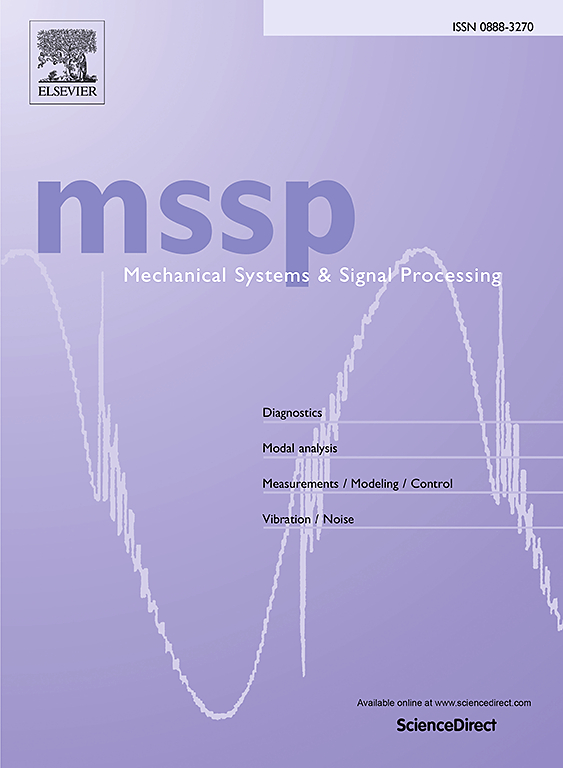考虑非线性特性的数控机床滑动导轨热耦合建模与分析
IF 7.9
1区 工程技术
Q1 ENGINEERING, MECHANICAL
引用次数: 0
摘要
数控机床滑动导轨系统的热动态特性是影响机床加工精度和运行稳定性的重要因素。然而,传统的热力或动力分析不足以阐明热力耦合对系统整体性能的影响。基于热动力相互作用机理,建立了滑动导轨系统的热动力耦合模型。首先,通过考虑键合表面几何形状和微观形貌对接触力、热阻和产热的影响,建立了多节点热网络模型。然后,利用集中质量法建立了考虑热变形、粘接表面微观形貌和摩擦、轴承和螺母摩擦力矩以及电机实际转矩影响的滑动导轨系统多自由度非线性动力学模型,以评估滑动导轨系统的瞬态动力学行为。其次,深入分析了滑动导轨系统热网模型与动力学模型耦合的机理和影响,涉及到运动部件的热膨胀、摩擦产热、结构变形和接触力之间的相互作用。最后,提出了一种闭环迭代算法来求解耦合模型。实验验证了该耦合模型的准确性和有效性。研究结果表明,滑动导轨系统的热效应和动力效应之间存在不可忽略的相互作用。考虑耦合效应的热网模型精度高于不考虑耦合效应的热网模型精度。该耦合模型能够有效地预测系统的热行为和动态特性。本文章由计算机程序翻译,如有差异,请以英文原文为准。
Modeling and analysis of thermal-dynamic coupling of sliding guide of CNC machine tools considering nonlinear characteristics
The thermal and dynamic characteristics of the sliding guide system in CNC machine tools are critical factors influencing machining accuracy and operational stability. Nevertheless, conventional thermal or dynamic analyses in isolation are insufficient to elucidate the influence of thermal-dynamic coupling on the overall performance of the system. In this paper, based on the thermal-dynamic interaction mechanism, a thermal-dynamic coupling model of the sliding guide system is constructed. First, a multi-node thermal network model is established by accounting for the effects of bonding surface geometry and micro-morphology on contact force, thermal resistance, and heat generation. Then, a multi-degree-of-freedom nonlinear dynamic model of the sliding guide system, which takes into account the effects of thermal deformation, micro-morphology and friction of the bonding surface, frictional moments of the bearing and the nut, and the actual torque of the motor, is developed by using the concentrated mass method in order to evaluate the transient dynamic behavior. Next, the mechanism and effects of the coupling between the thermal network model and the dynamic model of the sliding guide system are analyzed in depth, which involves the interactions between thermal expansion, frictional heat generation, structural deformation and the contact forces of the moving parts. Finally, a closed-loop iterative algorithm is proposed to solve the coupled model. The accuracy and validity of the coupled model are experimentally verified. The results of the study show that there is a non-negligible interaction between the thermal and dynamic effects of the sliding guide system. The accuracy of the thermal network model considering the coupling effect is higher than the accuracy without considering the coupling effect. The coupled model is able to effectively predict the thermal behavior and dynamic properties of the system.
求助全文
通过发布文献求助,成功后即可免费获取论文全文。
去求助
来源期刊

Mechanical Systems and Signal Processing
工程技术-工程:机械
CiteScore
14.80
自引率
13.10%
发文量
1183
审稿时长
5.4 months
期刊介绍:
Journal Name: Mechanical Systems and Signal Processing (MSSP)
Interdisciplinary Focus:
Mechanical, Aerospace, and Civil Engineering
Purpose:Reporting scientific advancements of the highest quality
Arising from new techniques in sensing, instrumentation, signal processing, modelling, and control of dynamic systems
 求助内容:
求助内容: 应助结果提醒方式:
应助结果提醒方式:


